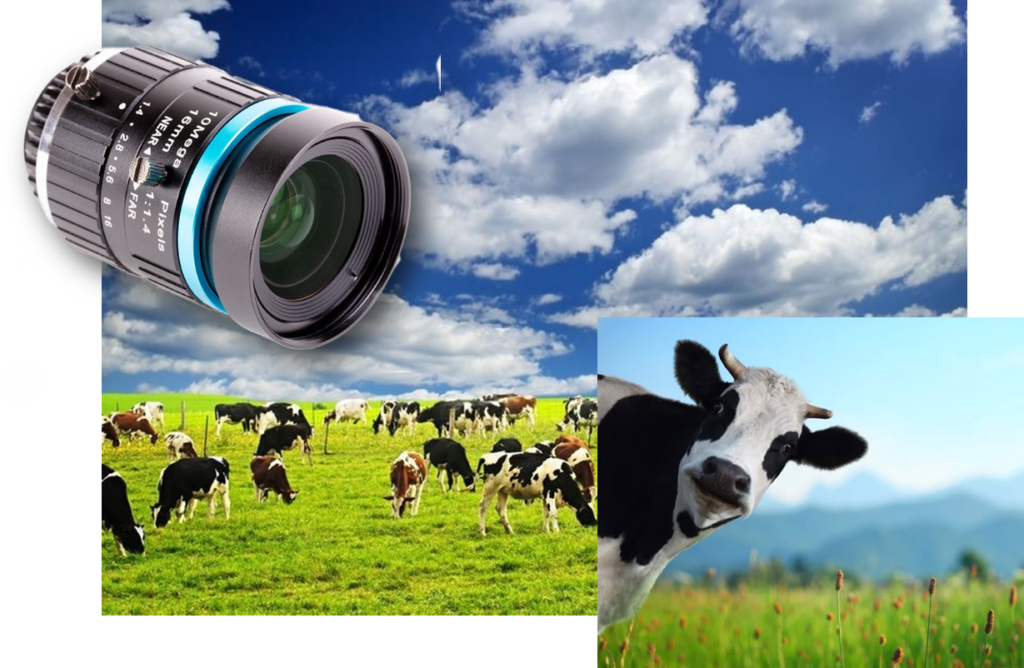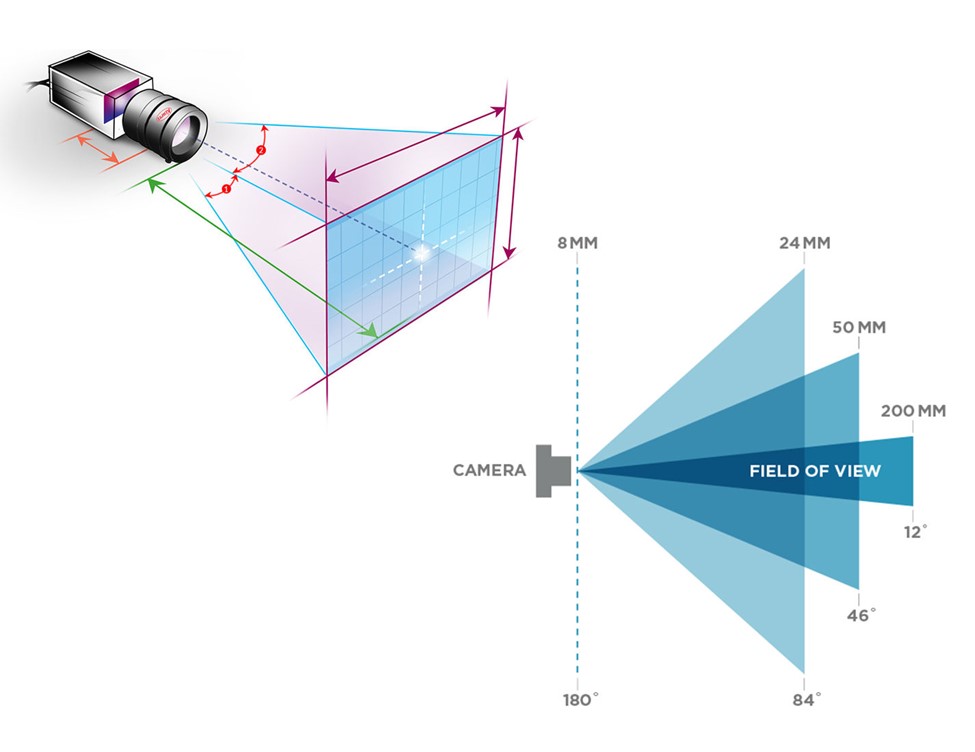How to Determine the Best Field of View

The lens of an IP camera determines the field of view (FOV). A lens can provide a wide or narrow FOV. For example, A wide field of view allows us to see a pasture filled with cows, and a narrow field of view allows us to see only one cow.
This article describes how to determine and calculate the best Field of View (FOV).
- The lens is measured in focal length (or mm). The smaller the focal length, the wider the view. A telephoto lens had a larger focal length. For example, a 500-millimeter lens can see things miles away.
- Surveillance cameras that include the lens provide the lens angle. The lens angle provides a more precise measure of the FOV.
- The lens specification also includes the clarity or F-stop, which determines how much light can pass through the lens. The lower the F-stop, the more light can pass.
How to Determine the Right Field of View
The right field of view is determined by the resolution or clarity you want to see at a certain distance from the camera. The wider the lens angle, the less detail you will see at a specific distance. For example, in a wide area view, you can see the cows but not the color of their eyes. The resolution of the camera also determines the FOV. For example, a 5-megapixel camera can see a wider area than a 2-Megapixel camera. The higher the resolution, the more area you can see at the same pixels/ft (or clarity).

How to calculate the field of view
First, determine the resolution you require for an application. For example, do you want to identify a person’s face or just see that someone was there? Do you want to see the cars on the road or the license plate of each vehicle? Each of these objectives requires a different resolution. The critical specification is pixels across the object. The more detail, the more pixels per foot or meter are required.
How Much Resolution is Required to Identify a Person?
It’s easier to identify a person you know than someone you don’t know. In many cases, you can identify a person not only by their face but also by their clothes and how they walk. The police would like a more objective (or forensic) identification. Forensic identification provides enough detail so that you can compare the video to a picture of a person’s face. You need a lot more resolution to identify a person you don’t know.
The Homeland Security Digital Video Quality Handbook describes how the number of pixels on target (pixels/face) affects image quality. The example below shows that you can get a very good picture when there are about 64 pixels across the face. This detail is close to forensic quality.
Samsung and Axis both say that you need about 40 pixels across the face to identify a person you know. Axis also says that you need up to 80 pixels across the face in challenging conditions. Samsung estimates that you need 80 pixels across the face to see more forensic details such as scars, birthmarks, and the color of their eyes.
The resolution required also depends on the lighting conditions. In challenging conditions, such as when it’s dark, the cameras switch to monochrome (B/W mode), and the camera’s amplifiers are working hard to “see.” Since the video noise level increases as amplification increases, more pixels are required for identification. Cameras with good signal processing can identify people in challenging lighting conditions. For example, Samsung and Sony have better signal processing than the Axis cameras so that they can be used in more challenging lighting conditions. Please look at our Low Light Test of Sony vs. Samsung vs. Axis.
Notice that there is a difference between pixels per face and pixels per ft. (or meter). You can convert pixels across the face to pixels per ft. The average width of a person’s face varies between men and women and can range between 5.7 and over 7 inches (according to a chart I found on the Internet). Let’s assume a face is about 6 inches wide. To convert from pixels per face, we multiply 2 faces/ft. x 40 pixels/face = 80 pixels/ft.
In summary, the required pixel resolution is:

- Identification of a person that you know – 80 pixels/ft.
- Forensic identification of a person you don’t know – 160 pixels/ft.
- Best identification when there are poor conditions – 180 pixels/ft.
More resolution is required when we are using automated facial recognition software. The pixel count will vary depending on the software that is used. It’s usually much higher than 80 pixels across the face.
Resolution across the Object
The key factor for clarity depends on the number of pixels across the object. The resolution of the camera and the field of view define what you can see.
How wide a field of view can we see and still be able to identify a person’s face? To calculate the widest field of view, divide the number of horizontal pixels (available from the camera) by the pixels/ft. you would like to achieve. The following formula is used to determine the field of view:
Total Horizontal Resolution / Pixels per ft. = Field of View
For the following example, let’s assume you would like to identify the face of a person you already know. If the camera resolution is 1920 x 1080 pixels (2-megapixel), then our widest field of view is:
1920/80 = 24 ft. (7.3 m).

If we have a 5-megapixel camera with a resolution of 2592 x 1944, then the widest horizontal field of view is 32.4 ft. (9.9 m).
And a 10-megapixel camera with 3648 x 2752-pixel resolution provides a 45.6 ft. (14 m) field of view.
We can also do this calculation in reverse. We can start with the field of view and then calculate the camera’s resolution. Use the following formula to calculate the resolution of the IP camera:
(Field of View) x (pixels/ft.) = Horizontal Resolution
If we want a field of view of 20 ft. and we need 80 pixels/ft, then the formula indicates:
20 ft. x 80 pixels/ft. = 1600 pixels (horizontal)
We can now select a camera that has at least 1600 horizontal pixels. For example, the Hanwha QND-6082R IP camera has a resolution of 1920 x 1080 pixels. This is a very nice 2.0 mega-pixel camera with enough resolution to meet these requirements. It also includes a motorized varifocal lens and provides excellent low light sensitivity and wide dynamic range (WDR).
Summary of Field of View Provided by IP Cameras
The lens and the camera’s resolution determine the best field of view. The application determines the resolution and FOV required and can be calculated using trigonometry.
Many IP cameras come with a lens, so it is essential to determine the application before ordering a specific camera.
If you would like help selecting the right camera and lens system, please get in touch with us at 1-800-431-1658 in the USA or 914-944-3425 everywhere else, or use our contact form.